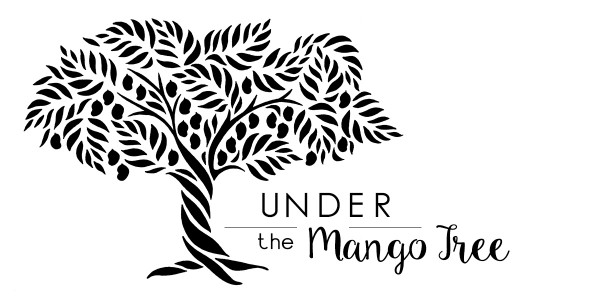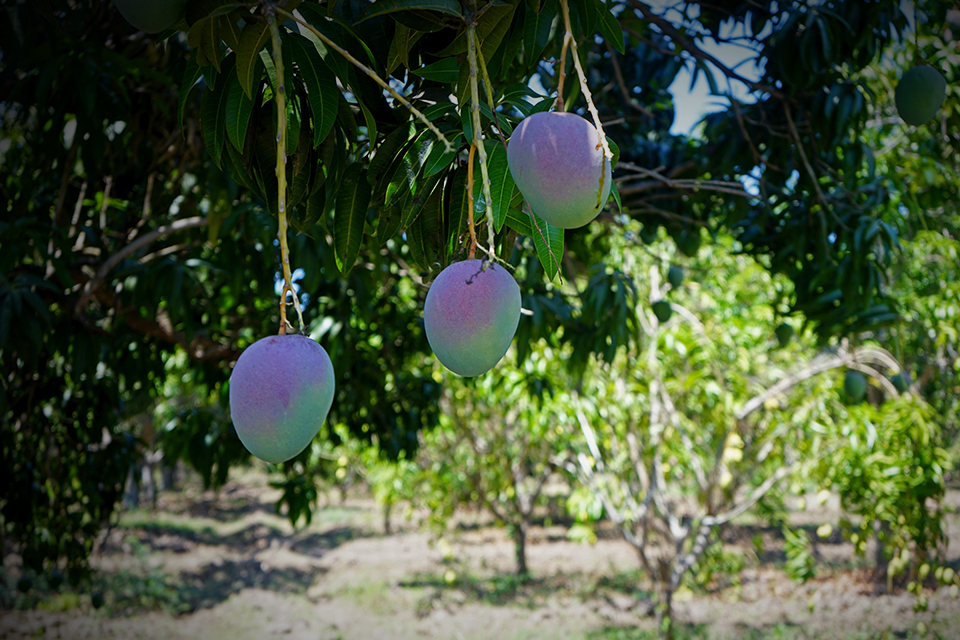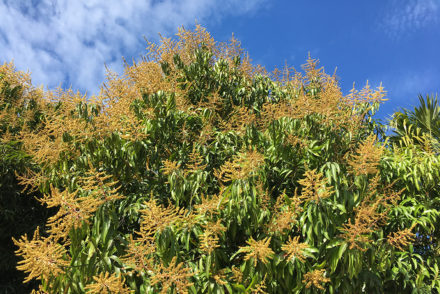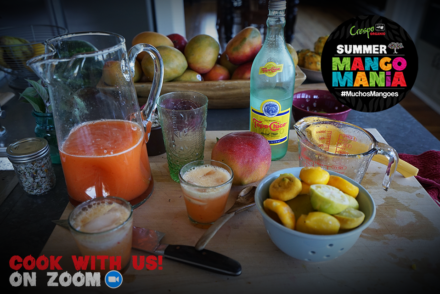Round Mango Market Difficulties Ahead
Weeks 8-12 are the problem. Last Friday there was an early morning surge of mango chatter amongst industry folks. A handful of the bigger conventional players released a series of statements —more like warnings, in the form of internal and external emails, the subject being massive shortages of round mangoes as the Peruvian season winds down and transitions into Mexican and Central American fruit.
I wasn’t surprised by these announcements, as I had indicated similar impending market pressures a few weeks back when writing about the Crespo Season Start. But the news was surprising, even for me, because, before now, no one had been this specific in terms of the conventional market and the mass shortages expected.
As the conventional side of the business began accumulating and communicating the latest information provided growers by Peru, Mexico and Central America, it was clear. A shortage is coming and it will affect anyone remotely involved with the fresh mango category.
The Peruvian growers were finally forthcoming and clear; there isn’t more fruit to pick and ship and the season will end much sooner than expected. This promoted the conventional sector to look for immediate needs and upped orders from Mexico and Central America; only to find out that would also arrive with challenges.
The early spring regions, all of them, have various problems are are either late, or have minimal to no volumes. The alarming emails sent out, siting more clearly than ever, “ the Peru mango season is winding down faster than anticipated” and “the last 24 hours have been a series of disappointing calls with Peruvian growers about volumes dropping sooner than expected”. Everyone began warning of serious shortages from mid-February through the end of March.
My phone began to ring off the hook. Customers, industry press and competitors asking what I knew about the brouhaha and the pandemonium that seemed looming in mangoes. I didn’t know much as I hadn’t heard anyone but me speaking to this vocally, but that is often the case, we are all afraid of problems in this industry and the all too common “ostrich move” (head in the sand) is often the reaction in the initial stages of forthcoming problems.
So, I did what I do best (not the ostrich move) — I investigated, asked questions (to the right people, in the right place), gathered intel, made sure the intel was factual, USEFUL and RELEVANT and now, I’m sharing it. Playing on my belief that more information shared is the best method for the system as a whole, regardless if you play in the organic, conventional, grower, buyer or seller sector.
The individual circumstances of other sectors of each commodity can often seem far off or unconnected to our own work within the commodity, but it’s all connected and it’s always relevant. What happens at a fruit’s point of origin, whether it be weather, gasoline prices or worker well-being, has implications that affect us all and what those outside the origin do about it, shapes the market and our potential for success and failure.
It’s impossible to work in organics, let alone thrive, and not be affected by the conventional world of each commodity, to not be attuned to its nuances and happenings is dangerous. We may differentiate organic from conventional in terms of register price, plu stickers and life choices, but in the fields and in the markets, organic production doesn’t exist and thrive in a vacuum. So the trouble ahead concerns me.
A tumultuous spring indeed looms in mangoes and even thoughts its genesis is in the conventional world, the organic market will face tremendous pressure.
It’s important we all know the facts and ideally cooperate the best we can to keep the markets stable during these upcoming 4-5 weeks. The greatest fear for the conventional market is that the squeezed will squeeze back. It’s hard to blame them if they do, but my experience with growers is that they are rarely the greediest in the chain.
Here’s what we know
Peru: There are several interesting factors when it comes to Peru and the rapidly dwindling volumes of mangoes that should have sustained the markets through mid-march. I reported for Organic Produce Network, back in October of 2018 ,that many growers were predicting about 30% less volume overall, siting the trees going into a deeper dormancy period, (also predicted to be happening in Mexico this season). According to a few I spoke with most importers didn’t believe the pre-warning of lower volumes, siting “growers always say that”.
To my understanding a natural dormancy period in mangoes happens when the trees don’t have any growth activity about 3-5 months after flushing, which is marked by the emergence of new shoots from old shoot terminals. The period of dormancy is a pre-condition for the flowering stage, and the time frame of dormancy typically differs per varietal. In commercially grown mangoes, according to a few growers, every 3-4 years the trees move into a deeper dormancy stage and produce less volume. This extra deep dormancy is typically triggered by things like lower temperatures and/or drought (Peru had both of these in that time frame). Dormancy periods aren’t necessarily a bad thing, the trees engage in building up their structures so that future seasons can produce more fruit. Unpredictable climate change in Peru has created a much more difficult environment in which to predict the direction of the orchards.
The heavy rains that are now more common in Peru in February and March have also made it difficult for Peru to deliver consistent quality. A lot of growers try and pick fruit before the rain comes, as they have this season, “trying to stay ahead of the weather and most the fields in Puira and Motupe have now been cleaned out”, according to one importer who also reminds of the already 30-40% less volumes in general.
Some importers claim this season was a bit of Boy Crying Wolf, noting that Peruvian growers always say volumes will be 30% less, and it’s not often the case …..until this season. This prediction has taken many “by surprise”. But I would argue, that the signs were there, as many in the organic side of the spectrum have been feeling this since the beginning of Peru’s pre-season. The market has also had consistently high prices all season long, with relatively few large dips and drops as is customary with the conventional side of Peru, which should have been an extra indicator. Consumer demand and overall excitement wasn’t in line with the rapid upward trajectory that mangoes had been experiencing, which was also curious.
My experience with Peruvian mango growers (organic, keep in mind) is that growers have been struggling for years to make ends meet and be profitable. The costs continue to rise on the production and export side and simultaneously they are continuously squeezed on price globally.
The advantage that fair-trade used to have in terms of capturing a greater piece of market share for Peruvian growers, especially in Europe is long gone, and so are the minimum price guarantees. Most the fair-trade organizations dropped the minimum price requirement on mangoes, as they have on most commodities, realizing the market has difficulty actually paying them. This made things worse for Peruvian growers especially the organic farmers, most of which have been certified fair-trade for many years mainly for the European export markets, which is still a focal point for exporters.
Peru has invested heavily in shipping mangoes to Europe, and a greater amount of production volumes have continued to be diverted there. Peruvian growers are feeling the squeeze price wise in Europe as well, but the markets there continue to pay greater returns than US markets. There has also been significant increase on airfreight fruit, that’s picked at a later date than container fruit giving consumers a better eating experience. Many exporters can thus ship more directly (direct trade) to customers and capture larger market shares. There is no significant similar market in the USA where consumers will pay a higher price for a mango that has matured on the tree.
I also just learned, from one importer, that the Peruvian IQF industry has expanded considerably and that has an impact on overall volumes decreasing as more growers squeezed in years past have found business by staying inside the country. Its reminiscent of the organic and fair-trade pineapple growers in Ecuador, years back, when they stopped shipping to the US market because of significant quality rejections and much financial loss. They were suffering a great deal and began investing in the local processing sector for dried and IQF- for export. Today it’s a thriving business and not much fresh is exported. Most people don’t even know Ecuador is a major organic and fair-trade pineapple producer, as the majority of production is sold into the dried and IQF sector and processed locally. The change offered growers less risk. The stability allowed them the ability to improve quality and overall margins and have better livelihoods.
The bottom line for the Peru season is that by the second week of February nothing significant will be incoming into the USA or Canada in terms of volume, this is for conventional and organic fruit.
Nicaragua: Is typically the first to come on the market with round mangoes as we transition out of Peru. Not only are these mangoes significantly delayed in general, but most of the orchards have not been well cared for and quality is expected to be substandard throughout the season. The local mango industry chose not to chemically induce flowering, as is customary in conventional mangoes and allowed the orchards to bloom naturally. Fruit, therefore, is not expected to hit market until mid-march. Nicaragua will not have any significant volume or quality this season. Political issues coupled with several years of scanty returns are to blame, reminding again of how the industry can randomly get squeezed back. Nicaragua produces conventional fruit only.
Guatemala: Generally, follows Nicaragua and effectively starts around the same time Mexico typically does, early March. This year, mostly due to colder weather, the season is about 2-3 weeks late with lower onset volumes. The majority of growers and importers site there is a lot of fruit coming, but it will be late and on the smaller side, size wise. Guatemalan fruit is expected to hit the market around the last week of March. Some insignificant volumes are possible in mid-March. Guatemala produces conventional fruit only.
Mexico: Is an interesting mango region because technically it consists of about 7 regions, with production in over 10 Mexican states, stretching up the entire length of Mexico, almost 2,400+ miles. Peru, and Ecuador have growing regions that stretch only about 200-300 miles in comparison. In addition, in each growing region there are numerous sub regions and once Mexico starts, more and more regions come on, with several producing simultaneously. The onset is always limited and in years when Peru ends early and Central America starts late, tremendous pressure is put on the Mexican system. This will be one of those seasons.
Typically, Mexico starts in late January with the Ataulfo mangoes, which are the earliest varietal. Round mangoes typically follow about 6 weeks behind them or in March. Mexico produces conventional and organic fruit. Organic production exists in the following regions: Chiapas, Oaxaca, Michoacán, Nayarit, Sinaloa, Baja and Los Mochis.
Mexico- Chiapas/Oaxaca: I lump these into one because the information is similar this season, although often there can be variances in timing, sizing and volumes. Oaxaca, in particular can suffer from an interesting weather phenomenon right before the seasons onset, due to the main growing regions proximity to La Ventosa. This season, is not only happening on time, but the weather has been and continues to be cooperative. There were some rains in December after ataulfo fruit formation that rendered quality defects in some of the earliest to pick fruit. We should see better quality ataulfos by March.
Round mangoes are in order to follow on time and projected to hit the market in early March. There will be finite volumes, as is normal during the beginning. No exceptional volumes are expected on the round mangoes from either of these areas until the very end of March. Growers report predictions of lower overall volumes in these regions. There will be less fruit and it will be larger in size. Some speculate, much like Peru the trees are moving through a deeper dormancy cycle.
Mexico- Michoacán: This region, generally, is a big source of early conventional round fruit that comes on early March. This season, the region not only is late, but predicted to be lower in volume due to rains that occurred during the flowering process, which has the tendency to knock down the blooms which potentially become the fruit. The orchards here have also seen a lot more vegetative growth, which potentially signals that dormancy notion. A lot of small fruit (this region is notorious for smaller fruit) will come from this region in mid-April and May.
Mexico- Nayarit & Sinaloa: Looking ahead it hard to predict. Most of the fruit in Nayarit and Sinaloa is just flowering which at least signals an on-time season. Nayarit is currently expecting to start in April and Sinaloa in May. Since only 1% of the blooms of a mango tree turn into fruit, it’s still too early to tell how much volume is predicted. Not to mention sizing predictions. By March definitive answers on the norther regions will be available.
We should all be using this time to promote and educate about Mexico’s unique mango varietal, the Ataulfo mango. There will be plenty of those come March and they just happen deliver one of the most incredible mango eating experiences on the planet!
Round mangoes will come, in the meantime, share (information) and care (about growers) because the squeezed always squeeze back!














No Comments